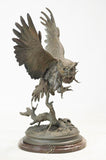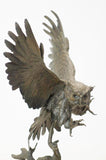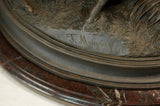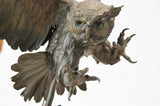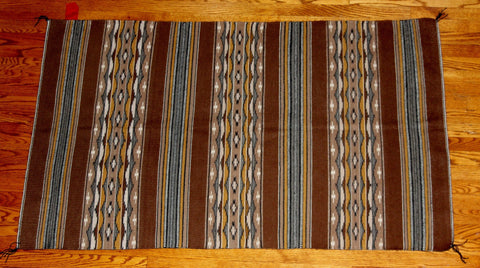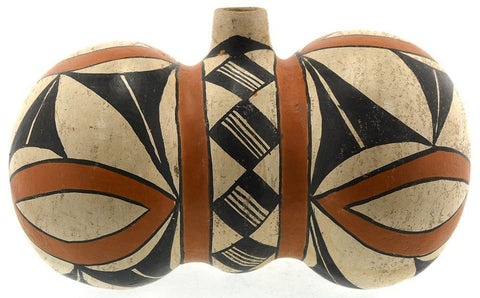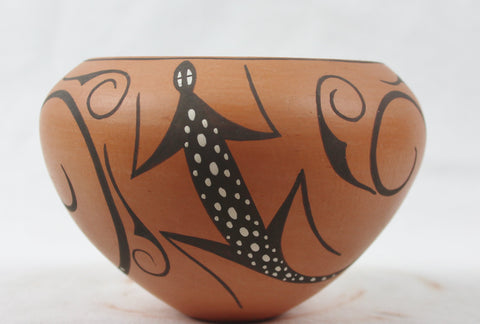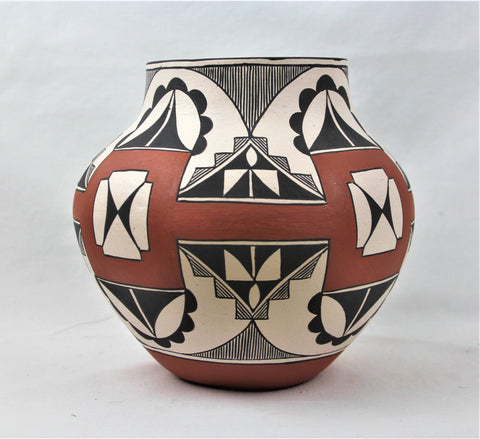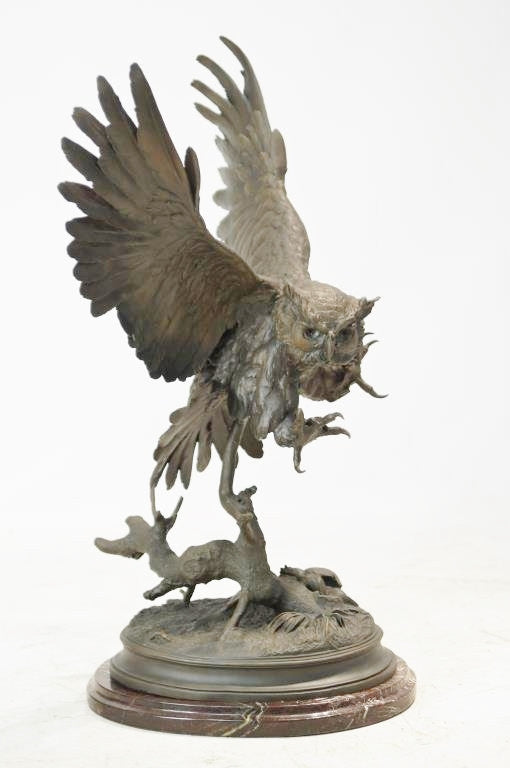
Bronze Sculpture, After Jules Moigniez (French 1835-1894), Le Hibou-The Owl,#933 SOLD
$ 3,760.00
Bronze Sculpture,
After Jules Moigniez ( French 1835-1894), Le Hibou-The Owl,#933
933. Description: High quality bronze sculpture created in the lost wax method and has a beautiful patina. Sits on a fine Italian marble base. Jules Moigniez (French, 1835-1894), Le Hibou (The Owl), bronze sculpture, signed on the base.
Dimensions: measures Approx. 31"h x 23"w x 13"d, with marble base: 33"h.
Condition Report: This sculpture is one of the finest reproductions of Moigniezs original sculptures and is in very good condition. Mr. Moigniez was of French nationality and would display his sculptures of game birds and hunting dogs in salons. He is famous worldwide.
Jules Moigniez was born in France in 1835. He began his studies under Paul Comolera. Because of Comolera's interest in the subject, Moigniez began sculpting birds. Throughout his career, his subjects of choice would actually be game birds. He also sculpted horses and dogs. Today, he is remembered as one of the great anamalier sculptures, and his work is admired for its detail, craftsmanship, and unique style.
Moigniez's first exhibit took place when he was 20 years old. It was in 1855 at the Paris Exposition Universelle. At this event, he exhibited a plaster titled Pointer Stopping at A Pheasant. From this point on, he exhibited his works. He began showing his pieces at the Salon from 1859-1892. During this time, he showcased thirty sculptures at the Salon and exhibited other pieces in England. His work became most popular with the people of England although he experienced success with art enthusiasts in England and America. Most of his game bird sculptures are thought to have been sold in America.
Moigniez's father was a metal glider. He wholeheartedly supported his son's pursuit of art. For this reason, most of Moigniez's bronzes were actually cast by his father in a foundry established in 1857. Moigniez's foundry also cast the bronzes of a few other, select artists. His father, just like Moigniez, was a meticulous worker, focusing much attention to detail. The bronzes stand out from the work of many others of the time period in that many of them were embellished. They didn't always have the standard finish. For example, some were gilded or silver plated. Many bore unusual finishes. It became a Moigniez trademark. Other artists would later follow in the trend that Moigniez started.
In 1869, at the age of 34, Moigniez became very ill. Unfortunately, he never recovered. He stopped producing new sculptures, and in 1894, he committed suicide. After Moigniez's death, his father continued to keep his son's legacy alive by casting his son's works. When Moigniez's father passed away, Aususte Gouge bought the plasters and models. He had cast most of Paul Comolera's works (Moigniez's instructor). Gouge produced Moigniez's sculptures for several more years. Moigniez will be remembered as a truly talented anamalier sculptor.
Because of his popularity, pieces by Moigniez do exist in the United States; however a Moigniez signature does not guarantee that the bronze is the work of the artist. In fact, some of the bronzes bearing the signature of Moigniez have been found to be the work of a California artist named Max Turner. In the 1960s, an art dealer added the Moigniez signature to many of his pieces to boost sales. It is highly possible that the work of Turner is actually partly responsible for helping solidify Moigniez's reputation as such a renowned anamalier sculptor. (Source: Art Expert)
After Jules Moigniez ( French 1835-1894), Le Hibou-The Owl,#933
933. Description: High quality bronze sculpture created in the lost wax method and has a beautiful patina. Sits on a fine Italian marble base. Jules Moigniez (French, 1835-1894), Le Hibou (The Owl), bronze sculpture, signed on the base.
Dimensions: measures Approx. 31"h x 23"w x 13"d, with marble base: 33"h.
Condition Report: This sculpture is one of the finest reproductions of Moigniezs original sculptures and is in very good condition. Mr. Moigniez was of French nationality and would display his sculptures of game birds and hunting dogs in salons. He is famous worldwide.
Jules Moigniez was born in France in 1835. He began his studies under Paul Comolera. Because of Comolera's interest in the subject, Moigniez began sculpting birds. Throughout his career, his subjects of choice would actually be game birds. He also sculpted horses and dogs. Today, he is remembered as one of the great anamalier sculptures, and his work is admired for its detail, craftsmanship, and unique style.
Moigniez's first exhibit took place when he was 20 years old. It was in 1855 at the Paris Exposition Universelle. At this event, he exhibited a plaster titled Pointer Stopping at A Pheasant. From this point on, he exhibited his works. He began showing his pieces at the Salon from 1859-1892. During this time, he showcased thirty sculptures at the Salon and exhibited other pieces in England. His work became most popular with the people of England although he experienced success with art enthusiasts in England and America. Most of his game bird sculptures are thought to have been sold in America.
Moigniez's father was a metal glider. He wholeheartedly supported his son's pursuit of art. For this reason, most of Moigniez's bronzes were actually cast by his father in a foundry established in 1857. Moigniez's foundry also cast the bronzes of a few other, select artists. His father, just like Moigniez, was a meticulous worker, focusing much attention to detail. The bronzes stand out from the work of many others of the time period in that many of them were embellished. They didn't always have the standard finish. For example, some were gilded or silver plated. Many bore unusual finishes. It became a Moigniez trademark. Other artists would later follow in the trend that Moigniez started.
In 1869, at the age of 34, Moigniez became very ill. Unfortunately, he never recovered. He stopped producing new sculptures, and in 1894, he committed suicide. After Moigniez's death, his father continued to keep his son's legacy alive by casting his son's works. When Moigniez's father passed away, Aususte Gouge bought the plasters and models. He had cast most of Paul Comolera's works (Moigniez's instructor). Gouge produced Moigniez's sculptures for several more years. Moigniez will be remembered as a truly talented anamalier sculptor.
Because of his popularity, pieces by Moigniez do exist in the United States; however a Moigniez signature does not guarantee that the bronze is the work of the artist. In fact, some of the bronzes bearing the signature of Moigniez have been found to be the work of a California artist named Max Turner. In the 1960s, an art dealer added the Moigniez signature to many of his pieces to boost sales. It is highly possible that the work of Turner is actually partly responsible for helping solidify Moigniez's reputation as such a renowned anamalier sculptor. (Source: Art Expert)
Related Products
Sold out
Sold out
Sold out

